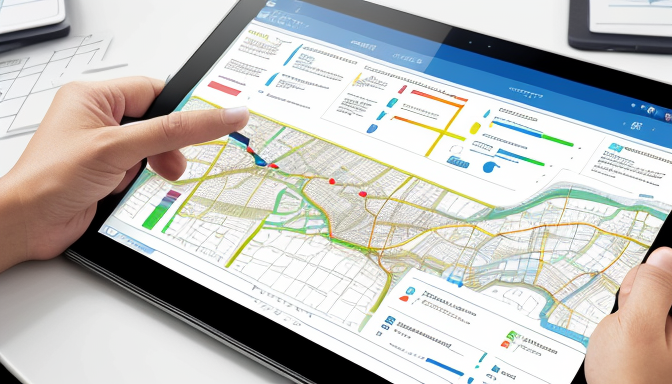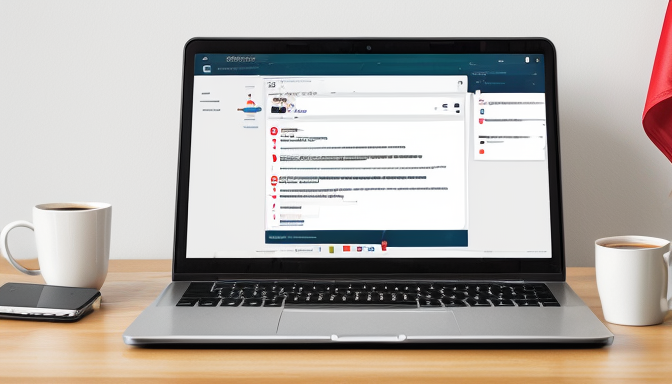
When it comes to analyzing competitors’ maps strategies, the game is all about understanding the landscape. Think of it like a treasure map. If you know where the X marks the spot for your competitors, you can find your own hidden treasures. This article dives into how to spot gaps, evaluate strategies, and apply what you learn locally. Each step is crucial for gaining a competitive edge in your market.
First off, why should you care about your competitors’ maps? Well, their strategies often highlight what works and what doesn’t in your industry. By examining their approaches, you can uncover areas they might have missed. Imagine walking into a store that has everything you need but one crucial item. That’s your chance to shine! By identifying these gaps, you can tailor your offerings to meet customer needs better than anyone else.
Next, let’s talk about evaluation. Evaluating competitors’ maps strategies is like putting on a pair of binoculars. You get a clearer view of their strengths and weaknesses. What are they doing right? Where are they falling short? For instance, if a competitor has a strong online presence but lacks local engagement, that’s your cue to step in. You can focus on building relationships in your community, making your brand more relatable and accessible.
But here’s the kicker: it’s not just about knowing what they do. It’s about taking that information and making it work for you. This is where applying insights locally comes into play. You can take cues from your competitors but tailor your strategies to fit your specific audience. Think about it. If a competitor runs a successful campaign in one city, try adapting that campaign for your local market. You might tweak the messaging or the channels used, but the core idea can drive engagement.
In summary, analyzing competitors’ maps strategies isn’t just a box to check off your to-do list. It’s a powerful tool for growth. By identifying gaps, evaluating their tactics, and applying what you learn, you can position yourself as a leader in your market. So grab your map, take a good look at the landscape, and get ready to carve out your own path to success.

Identify Gaps in Competitors’ Maps Strategies
When we talk about analyzing competitors’ map strategies, it’s like playing a game of chess. You need to see the board clearly. What are your opponents doing? Where are they strong? But more importantly, where are they weak? Identifying gaps in competitors’ maps strategies is crucial for any business that wants to gain an edge. Think about it: if you can spot areas they’ve overlooked, you can swoop in and capture that market. It’s about finding those hidden opportunities that others miss.
Imagine walking through a neighborhood. You notice a new coffee shop on one corner, bustling with customers. But what if you also see another corner with a vacant storefront? That’s a gap! Competitors might be focusing on trendy locations, but they might be ignoring areas that need services or products. This is where you can shine. By understanding the weaknesses in your competitors’ strategies, you can position yourself as the go-to option.
To effectively identify these gaps, you can start by asking some simple questions:
- What services are they not offering?
- Are there customer complaints that remain unaddressed?
- Which locations do they overlook?
When you gather this information, it’s like piecing together a puzzle. Each piece reveals more about the competitive landscape. You can even create a table to visualize your findings. Here’s a simple example:
| Competitor | Strengths | Weaknesses |
|---|---|---|
| Competitor A | Strong online presence | Limited local engagement |
| Competitor B | Wide product range | High prices |
| Competitor C | Excellent customer service | Slow delivery times |
By analyzing this table, you can easily spot where your competitors fall short. For instance, if Competitor A has a strong online presence but lacks local engagement, you might want to focus on community events or local advertising. This is where you can fill the gap and attract those customers who feel neglected.
In conclusion, identifying gaps in competitors’ maps strategies isn’t just about knowing what they do. It’s about understanding their shortcomings. By honing in on these areas, you can enhance your own positioning and expand your market reach. Remember, every gap you identify is a chance for you to step up your game and connect with customers in ways your competitors haven’t even considered.

Evaluate Competitors’ Maps Strategies
When we talk about evaluating competitors’ map strategies, it’s like peeking into a treasure chest. You get to see what others are doing well and where they might be stumbling. This process isn’t just about copying what works; it’s about understanding the landscape. Think of it as being a detective in a mystery novel. You gather clues, piece together the puzzle, and ultimately, find your own path to success.
First off, let’s break down what it means to evaluate these strategies. You need to look at how your competitors are using maps to connect with their audience. Are they highlighting their locations effectively? Are they using maps to showcase their services or products? By answering these questions, you can uncover valuable insights. For instance, if a competitor is dominating a particular area, it’s crucial to understand why. Is it their marketing, their product offerings, or perhaps their location? Identifying these factors can help you refine your own approach.
Moreover, you should consider the tools your competitors are utilizing. Are they leveraging advanced mapping technologies or sticking to basic options? This evaluation can reveal gaps in their strategies. If they are not using interactive maps, for example, that’s a chance for you to stand out. You can create a more engaging experience for your customers by offering features like real-time updates or customized routes that cater to their needs.
Another key aspect of evaluating competitors’ map strategies is understanding their target audience. Who are they trying to reach? Are they focusing on local customers, or are they aiming for a broader market? By analyzing their audience engagement, you can identify opportunities to cater to specific demographics that they may be overlooking. For example, if a competitor primarily targets young professionals, you might find a niche in attracting families or seniors.
To make this process easier, you can create a table to compare different aspects of your competitors’ strategies. Here’s a simple example:
| Competitor | Map Features | Target Audience | Strengths | Weaknesses |
|---|---|---|---|---|
| Competitor A | Interactive, Real-time | Young Professionals | Engaging Interface | Limited Local Reach |
| Competitor B | Basic, Static | Families | Strong Community Presence | Poor User Experience |
By compiling this information, you can easily visualize where each competitor stands. This clarity can lead to actionable strategies for your own business. Remember, evaluating competitors’ map strategies is not just about what they do; it’s about how you can do it better. So, take a step back, analyze the situation, and use these insights to carve out your own competitive advantage.

Apply Competitors’ Maps Strategies Locally
When it comes to **applying competitors’ maps strategies locally**, the first step is understanding your own market. Think of it like navigating a new city. You wouldn’t just jump in your car and drive without a map, right? You’d want to know where the best restaurants are, the quickest routes, and maybe even the hidden gems that aren’t on the tourist maps. The same goes for your business. By analyzing your competitors’ strategies, you can pinpoint areas where they thrive and where they fall short.
Imagine you’re in a neighborhood bustling with coffee shops. One shop might be popular for its cozy ambiance, while another might excel in speedy service. By studying these aspects, you can tailor your approach. If your competitor has a fantastic location but lacks a strong online presence, that’s your cue! You can enhance your digital marketing efforts to draw in customers who may not be aware of your shop.
To effectively apply these strategies, consider the following:
- Local Preferences: Understand what your community values. Are they looking for sustainability? Fast service? Unique offerings?
- Customer Engagement: Use insights from competitors to create engaging local campaigns. Perhaps a community event or a loyalty program that resonates with local culture.
- Feedback Loop: Encourage feedback from your customers. This can help you adjust your strategies in real-time, much like a GPS updates your route based on traffic conditions.
It’s essential to **evaluate the effectiveness** of these applied strategies regularly. Just like you wouldn’t ignore a flat tire on your car, don’t ignore the signs that your strategies might need tweaking. Are customers responding positively? Are sales increasing? Are you gaining traction in areas where competitors dominate?
Utilizing tools like Google Maps and local SEO can also enhance your visibility. By optimizing your online presence, you can ensure that when potential customers search for services you provide, your business pops up first. This is especially important in a competitive market where every click counts.
In conclusion, **applying competitors’ maps strategies locally** isn’t just about copying what others do. It’s about understanding your unique position in the market. By analyzing your competitors, identifying gaps, and tailoring your approach to meet local needs, you can carve out a niche for your business. Remember, it’s not just about being present; it’s about being relevant. So, take the time to explore, adapt, and most importantly, engage with your community. Your efforts will pay off in the long run!
Frequently Asked Questions
- What are the key benefits of analyzing competitors’ map strategies?
Analyzing competitors’ map strategies helps you uncover gaps in the market, allowing you to identify areas they may have overlooked. This insight can enhance your positioning, enabling you to tailor your offerings and attract more customers.
- How can I identify weaknesses in my competitors’ map strategies?
To pinpoint weaknesses, start by examining their map layouts, customer engagement metrics, and service delivery. Look for patterns or areas where they fall short, such as poorly targeted locations or lack of customer interaction, and use this information to refine your own strategy.
- What methods can I use to evaluate the effectiveness of competitors’ map strategies?
You can evaluate effectiveness through various methods, such as analyzing customer reviews, studying traffic patterns, and utilizing analytics tools. This data will reveal how well their strategies are performing and highlight opportunities for your business to capitalize on.
- How can I apply insights from competitors’ map strategies in my local market?
Start by tailoring your approach to meet the specific needs of your local audience. Use the insights gained from your analysis to enhance your offerings, improve customer engagement, and create targeted marketing campaigns that resonate with your community.
- Are there any tools recommended for analyzing competitors’ map strategies?
Yes! Tools like Google Maps, SEMrush, and Ahrefs are fantastic for analyzing competitors’ online presence and mapping strategies. They provide valuable insights into traffic, customer behavior, and keyword performance, helping you make informed decisions.



